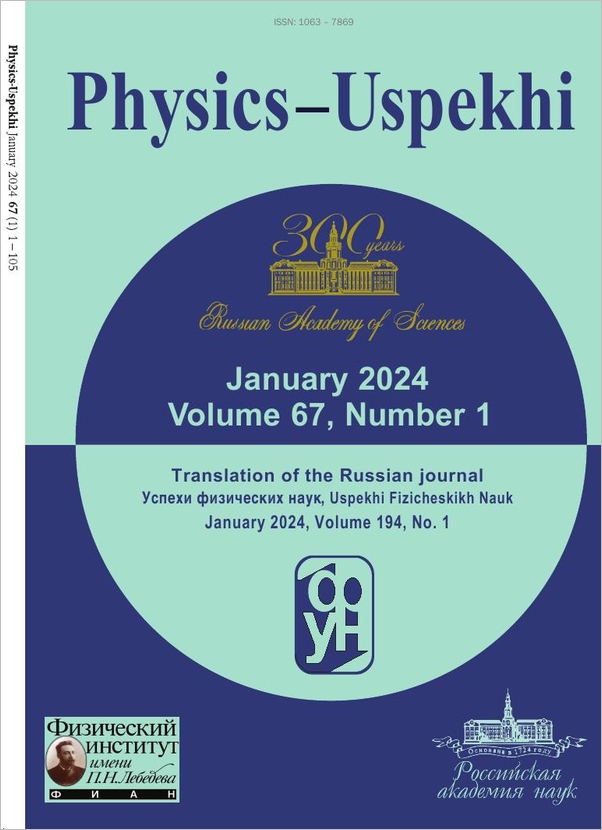|
This article is cited in 70 scientific papers (total in 70 papers)
REVIEWS OF TOPICAL PROBLEMS
The self-focusing effect
G. A. Askar'yan
P. N. Lebedev Physical Institute, the USSR Academy of Sciences, Moscow
Abstract:
A critical review is presented of the theoretical and experimental research on self-focusing, and its main purposes and development trends are noted. It is indicated that the most complete definition of self-focusing, from which all its variants follow, is a decrease of the divergence (or, equivalently, an increase of the convergence) of high-power radiation in a medium. It is noted that the spatial distribution of the focusing action makes the waveguide description most complete, since it is universally known that waveguides come in a variety of cross sections, lengths, and dielectric-constant distributions, while an arbitrary radiation flux (a beam of rays) can be subdivided into self-focusing beams. The main purpose of self-focusing, namely, directed transmission of concentrated radiation and focusing the radiation into a single focus, is noted. It is shown that in practice the multifocus regime is not suitable for this purpose. It is indicated that the multifocus structure is a particular case of a previously described subdivision of a beam into beams of near-threshold power. Practical applications of self-focusing for radiation energetics, high-temperature heating of matter, control of destruction processes, acceleration of particles by a traveling focus, and others, are indicated.
Citation:
G. A. Askar'yan, “The self-focusing effect”, UFN, 111:2 (1973), 249–260; Phys. Usp., 16:5 (1973), 680–686
Linking options:
https://www.mathnet.ru/eng/ufn10465 https://www.mathnet.ru/eng/ufn/v111/i2/p249
|


| Statistics & downloads: |
| Abstract page: | 170 | | Full-text PDF : | 61 |
|





 Contact us:
Contact us: Terms of Use
Terms of Use
 Registration to the website
Registration to the website Logotypes
Logotypes








 Citation in format
Citation in format 
